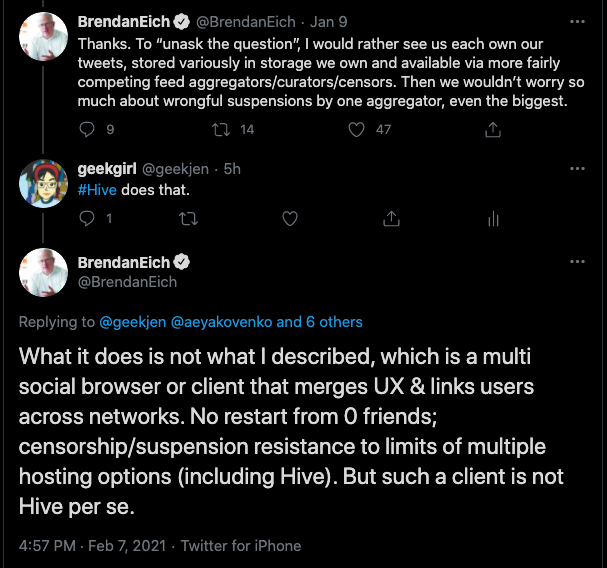
Hive is a decentralized multipurpose application blockchain. It's purpose is not only Hive blogging. At first glance it may seem that Hive blockchain's main function is providing social blogging platform in decentralized manner. It not its purpose or goal. Hive blogging, regardless which front-end app you use, is only a proof of concept of what can be done on Hive. In its core it is designed to power many social platforms, many games, many applications, various purpose websites and businesses independent from each other. There are already many examples of how Hive can be utilized besides its native blogging features. And this magic happens with Hive's custom JSON feature.
You can build anything you can imagine on top of Hive blockchain utilizing custom JSON, and get the benefits of decentralization, larger network, and economy. If you would like to learn more about custom_json, feel free to read Custom JSON - The Magical Power Of Hive Blockchain. The purpose of this post is to discuss the scalability of Hive. If Hive indeed can power tens of thousands of platforms, apps, and games; if Hive indeed can empower tens and hundreds of millions of people, the scalability becomes the main question. At its current stage, Hive blockchain has a limited capacity and may have difficulty processing hundreds and thousands of millions of transactions.
Hive is a decentralized database. It can store all kinds of social and digital activities, and interactions. Social actions like posting, upvoting, following, commenting, gaming are stored in the blockchain. The blockchain doesn't have unlimited capacity and power. In fact, we can calculate how much data can be stored within a certain time period and compare with how much data is generated by people's online activities on various platforms.
Every Hive transaction is stored in Hive blocks and each block has set size. Currently, block size consensus is 65,536 bytes. This parameter is set by witnesses, and they can change this anytime they like. One of the Hive witnesses, Hextech has this parameter set at 131,072. Hive blocks are just bunch of transactions in text format. If one byte can store one character, this would mean one Hive block, currently can store maximum of 65,536 characters. This means we can store limited amount of transactions: be it posts, comments, custom_json, upvotes, follows, asset transfers, etc. This limit is defined by this block size.
Let's say Twitter like apps starts operating on Hive, and one person would in average post 100 characters at a time. This means we can store about 600 tweets in one block. Hive blocks are produced every 3 seconds. If Hive produces 28,800 blocks a day, this would result in 17 million tweets a day. On average there are about 500 million tweets shared on Twitter every day. Current block size and production speed wouldn't be able to accommodate all daily Twitter activities and all Twitter user-base.
Twitter is an extreme example. But still it is just one platform. How is Hive suppose to power many many apps, games, and platforms? How can Hive scale to make this happen? These are among some important questions asked by those who looked into Hive blockchain. One of such people is, Brendan Eich. We may think, Hive is not well known yet and people just ignore. I believe many who are interested in blockchain technologies to build Web3 know about Hive, how it works and what it does. Last year I had an opportunity of brief Twitter exchange with Brendan Eich.

It is clear from this and other tweets of Brendan that he knows about Hive. While he believe no blockchain is a solution for Web3, he specifically thinking Hive is not it either. In other places he talked about scalability as well.
Who is Brendan Eich, and why should we even care about what he thinks? He is the creator of JavaScript, the main programming language that powers all browsers. The history of JavaScript itself is interesting as well. But the most interesting part is how it transformed the web. It powers the most used apps in the world, the browsers. Brendan Eich is also the founder of Brave browser and Basic Attention Tokens. So, clearly he is interested in blockchain technologies, crypto, and where the next iteration of the web is heading. If someone with his background, experience, and expertise knows Hive and has legitimate questions/concerns, I am sure there are others too.
Just because Hive currently may have limitations, doesn't mean it cannot scale. Even centralized systems and platforms don't have massive capacity right away. The solution most of the time is money. And more money is invested into the infrastructure and brainpower as systems and platforms grow. Doing so too early, maybe wasteful and get them bankrupt before bigger things happen. This reminds what Blocktrades said during one of the interviews. How Hive blockchain core team of course has considered scaling options, but these are better done gradually as the network grows.
Spending resources, efforts, and time to support a billion user-base right now when participation is not even in millions would be a bad idea. There are better things to do. There are higher priorities. Tackling scaling issues as the network grows makes sense and seems to be doable and only limited to the available hardware technologies, which also improves over time.
So, the first option we can consider is increasing the block size. This would mean more processing power needed for witness nodes, and paying for more expensive servers. At current Hive prices, top witnesses of Hive make about $4,500 per month. This maybe decent amount of money to cover the costs, but not nearly enough to go super fancy with the infrastructure. Good news is, as the network grows, the value of the network grows as well and it reflects on underlying asset, the Hive coins.

Let's say the network growth cause Hive prices to go up to $10. This would increase revenue from producing blocks for Hive top witnesses to about $90,000 per month. Now with this kind of funding witnesses can purchase of build all kinds of fancy hardware to run their witness nodes that can support a lot higher block sizes. When price goes up to $100, witnesses will be running a million dollar nodes. More resources will create more opportunities and possibilities.
Another question I always had was the possibility of lowering the 3 seconds block production time to something lower. Recently, I got the answer to this as well and it looks like this is possible with some decent amount of work on blockchain code. Again, as there are more resources and brainpower is available with the the growth of the network, these limitations can be improved as well. The cool thing about Hive is, it has awesome developers who continue improving core code, and other developing apps and layer 2 solutions. Among the recent announcements was how pretty soon we may get OBI protocol, which will bring one block irreversibility to Hive. I think this is huge and will also help with future scaling solutions. All apps, games, and Hive participants will greatly benefit with OBI.
Keep in mind that Hive also has decent size decentralized fund that will also play important role in continuous development, improvement, and innovation. Both software and hardware technologies also will continue getting better and better. We are in a good shape in building the Web3 decentralized standards and I have no doubt Hive will scale just fine and will be able to power many many apps, games and platforms and become home for hundreds of millions if not billions.
Posted Using LeoFinance Beta











